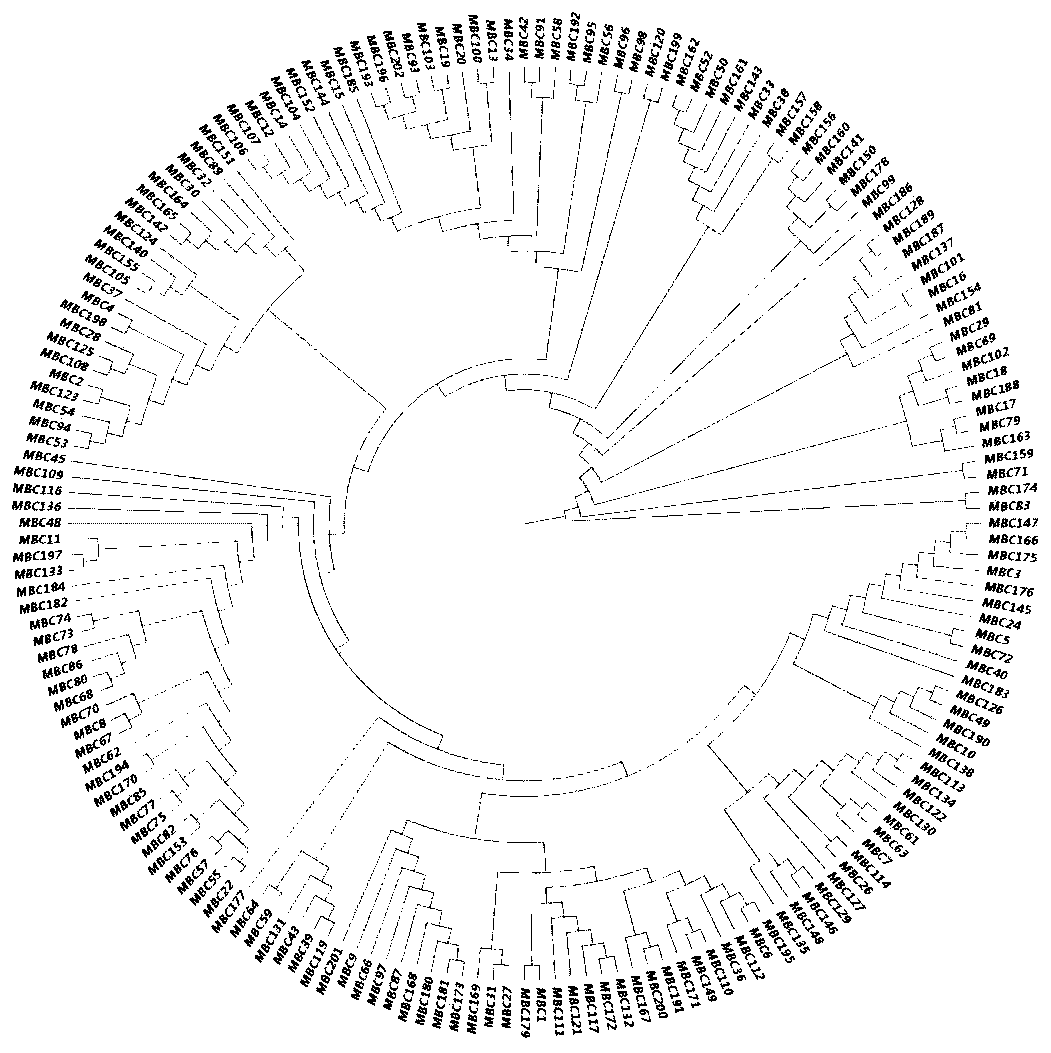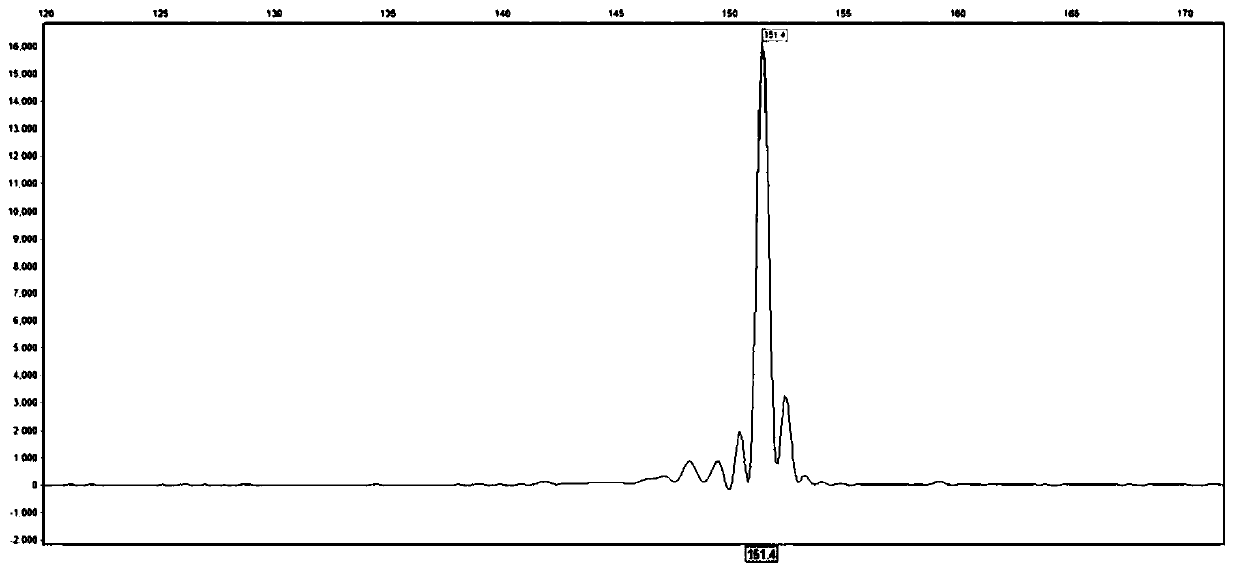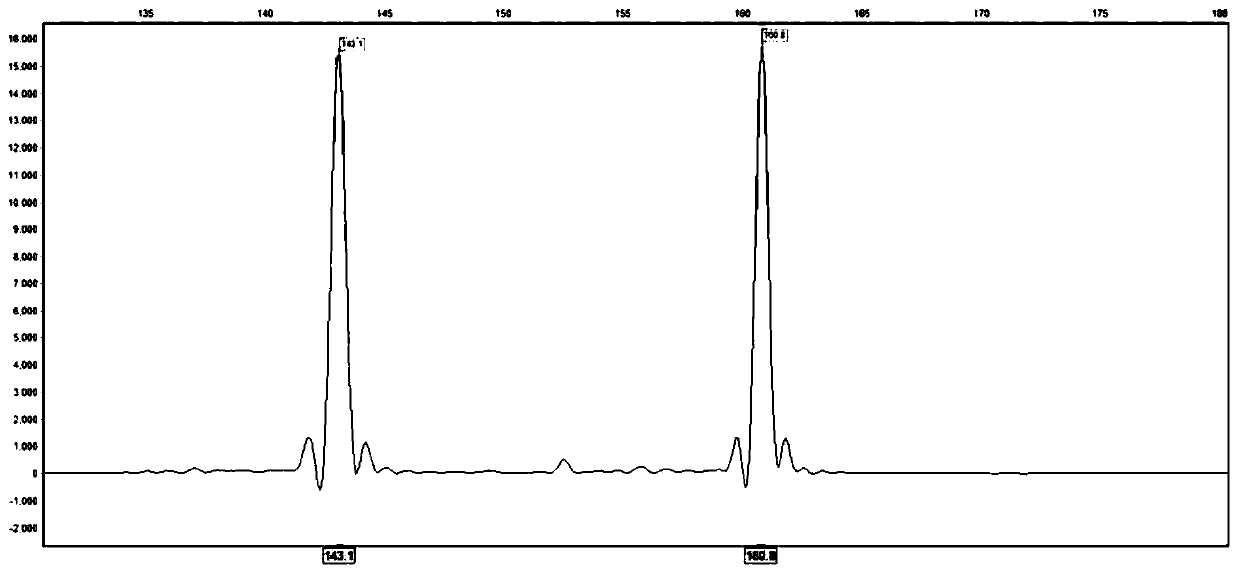Method for identifying authenticity of brassica rapa variety and special SSR (simple sequence repeat) primer combination of method
A pakchoi, authenticity technology, applied in biochemical equipment and methods, recombinant DNA technology, microbial assay/inspection, etc., can solve the problem of insufficient identification efficiency, inability to judge whether it is a pakchoi variety, and there is no ideal molecular identification yet. methods, etc.
- Summary
- Abstract
- Description
- Claims
- Application Information
AI Technical Summary
Problems solved by technology
Method used
Image
Examples
Embodiment 1
[0089] Acquisition of SSR Primer Combination for Identifying the Authenticity of Chinese Cabbage Varieties
[0090] 1. The discovery of 23 SSR loci: These loci were based on the reference genome Brassica_rapa V1.5 of the closely related species of Chinese cabbage and Brassica olerecea V2.1 of the reference genome of cabbage combined with the whole genome resequencing data of 40 germplasm resources obtained by data mining.
[0091] 1. Different from other molecular marker identification methods, the method of blindly selecting SSR markers at random, the present invention uses the reference genome of pakchoi, and uses unique, representative, resequencing data of 40 pakchoi varieties (resequencing results Undisclosed), through a specific big data analysis method, the SSR loci of the whole genome are analyzed, and a series of screening conditions such as PIC, MAF, and sequence conservation are screened, and finally a set of SSR loci is obtained. Data dimensionality reduction and ...
Embodiment 2
[0113] This example is the validity test of the SSR primer combination developed in Example 1.
[0114] 229 pakchoi varieties for testing in the present embodiment are common fine varieties or part imported varieties from abroad, and the specific varieties are as follows:
[0115]
[0116]
[0117]
[0118]
[0119]
[0120]
[0121] 1. Obtaining the genomic DNA of the pakchoi varieties tested
[0122] The leaves of 229 pakchoi varieties for testing were extracted by CTAB method (the true leaves of 30 seeds were mixed, that is, the true leaves of 30 seeds for each variety, referring to: the same variety of 30 different plants) Genomic DNA of mixed true leaves) to obtain the genomic DNA of pakchoi varieties for testing.
[0123] The operation of the above CTAB method is as follows:
[0124] The leaves of the above-mentioned 229 varieties at the seedling stage were picked respectively, and placed in a freeze dryer (CoolSafe 55-4) to dehydrate; Add 800 μL of ...
Embodiment 3
[0141] This embodiment is a method for detecting whether the variety of pakchoi to be tested belongs to the variety of 229 varieties of pakchoi to be tested. The variety of the pakchoi to be tested is unknown, and the variety of the pakchoi to be tested needs to be obtained through the detection method of this embodiment Whether it is one of these 229 varieties.
[0142] 1. Obtaining the genomic DNA of the Chinese cabbage variety to be tested
[0143] The leaves of the pakchoi varieties to be tested were taken from the experimental base of the Vegetable Research Center of Beijing Academy of Agriculture and Forestry Sciences.
[0144] According to the method of step 1 in Example 2, "leaves of the pakchoi variety to be tested" were replaced with "leaves of the pakchoi variety to be tested", and the other steps were all unchanged to obtain the genomic DNA of the pakchoi variety to be tested.
[0145] 2. Configuration of SSR primers and PCR reaction system
[0146] According to ...
PUM
 Login to View More
Login to View More Abstract
Description
Claims
Application Information
 Login to View More
Login to View More - R&D
- Intellectual Property
- Life Sciences
- Materials
- Tech Scout
- Unparalleled Data Quality
- Higher Quality Content
- 60% Fewer Hallucinations
Browse by: Latest US Patents, China's latest patents, Technical Efficacy Thesaurus, Application Domain, Technology Topic, Popular Technical Reports.
© 2025 PatSnap. All rights reserved.Legal|Privacy policy|Modern Slavery Act Transparency Statement|Sitemap|About US| Contact US: help@patsnap.com



